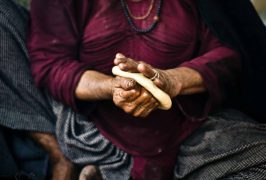On Thursday, May 21, the Supreme Court of Canada released its decision in R. v. Kokopenace. The majority of the Court found that the systematic exclusion of Indigenous on-reserve residents from the jury roll in Ontario is not a violation of the Charter right to a fair trial under ss. 11(d) and 11(f), or of equality rights under s. 15. The Ontario government had appealed the Ontario Court of Appeal’s decision that the systemic underrepresentation of on-reserve Indigenous people on the jury roll violated the right of the accused to an independent and impartial jury.
LEAF intervened in the case along with our partner, the David Asper Centre for Constitutional Rights at the University of Toronto. LEAF argued that the Crown’s discriminatory failure to take reasonable steps to include on-reserve residents in the jury roll perpetuates the historic disadvantage of Indigenous accused persons and prospective on-reserve jurors. We further argued that the larger context of systemic, persistent, pervasive discrimination against these populations cannot be ignored, and that the Crown’s failure here must not be excused.
While Moldaver J. for the majority acknowledged the “the distressing history of estrangement and discrimination suffered by Aboriginal peoples”[1] is a “pressing social problem”,[2] the majority ultimately held that the Charter right to a fair trial “cannot be used to dictate to the government how it should — let alone must — resolve important policy questions of this nature”.[3] The majority also made the troubling finding that the Ontario government: “was not required to address systemic problems contributing to the reluctance of Aboriginal on-reserve residents to participate in the jury process”.[4] They decided that as long as the government does not deliberately exclude a particular group, or the state’s efforts in compiling the jury roll are not so deficient as to create an appearance of partiality, then the jury pool composition process is fair.[5]
The Court has in the past described the “crisis” in the criminal justice system regarding Indigenous people (Gladue, Ipelee). Yet the majority reasons seem to suggest that Indigenous “reluctance” to participate in this system is somehow to blame for the government’s systemic failure to make it possible for people such as Clifford Kokopenace to have a jury of his peers.[6] The case was rife with evidence of systemic discrimination and yet the Court declined to find a violation of s. 15 of the Charter. A s. 15 analysis, or an equality analysis of s. 11 would have put into perspective the profound marginalization of Indigenous peoples in the Canadian criminal justice system and the resulting “reluctance” to participate in its structures.
The majority’s decision fails to connect the government’s systemic failures with the lack of response by Indigenous people to be on jury rolls. This is a population that has been profoundly alienated from the Canadian criminal justice system. The chronically low representation of Indigenous people on juries may be contrasted with the alarming increase in representation of Indigenous people in Canadian prisons in the last decade. Howard Sapers, the outgoing federal correctional investigator, has reported that First Nations, Metis and Inuit prisoners in federal prisons account for 23 per cent of inmates, up from 17 per cent a decade ago. Indigenous women comprised approximately 32 per cent of all female federal prisoners in 2010-11 — up more than 85 per cent in 10 years.[7] Given that Indigenous people account for about 4 per cent of the total population in Canada, these numbers are wildly disproportionate. The system is structurally discriminatory. The majority decision is a very disappointing missed opportunity to address one aspect of the problem.
LEAF is deeply concerned that the majority decision fails to take into account years of equality law jurisprudence rejecting the premise that discriminatory behaviour must be intentional. The majority suggests that since the Ontario government made an effort to address the low representation of on-reserve Indigenous people in the jury pool, the impact of their failure to achieve representation was unimportant. For years, LEAF has argued, and the Supreme Court has accepted, that it is the effect of discriminatory actions or omissions that are the determinant of discrimination, not the intention evinced by the government policy or statute involved (Andrews, Kapp). The majority decision here has potentially negative effects for substantive equality claims in the future.
The dissenting reasons reveal a starkly different vision from that of the majority as to the government’s responsibility in addressing systemic discrimination in Canada. Justice Cromwell, writing in dissent (along with the Chief Justice) acknowledged the importance of government action on the issue of under-representation of Indigenous people in the jury pool, stating that: “having played a substantial role in creating these problems, the state should have some obligation to address them in the context of complying with an accused’s constitutional right to a representative jury roll”.[8]
The majority’s decision is distressing in that it suggests that because the problem of Indigenous disengagement from the criminal justice system is complex and multi-faceted, it is not up to the state to fix it – essentially the majority says that departing from the longstanding procedures for jury pool creation would be too radical a response.[9]
“Just because we have always done something a particular way does not make it right to continue that way. The crisis of the criminal justice system’s treatment of Indigenous peoples requires bold solutions. The way things have always been done is a huge part of the problem. Declining to acknowledge this makes for a worrisome precedent for addressing systemic discrimination in this country, ” noted LEAF Legal Director Dr. Kim Stanton.
Such discrimination must be addressed by the state if there is to be any hope of ameliorating its effects. As LEAF and the Asper Centre noted in their factum, “Aboriginal peoples must see themselves and their perspectives reflected in the adjudicative side of the criminal justice system.”
LEAF is concerned that the majority acknowledges the existence of systemic discrimination against Indigenous peoples in the criminal justice system, yet does not find a violation of Charter rights in this case. To cast this systemic issue as one of individual rights is deeply problematic. The processes that the Ontario government has begun to ameliorate this situation must be continued and even reinvigorated.
Despite the extremely discouraging outcome of the case, LEAF’s hope is that the government will acknowledge this obligation to take proactive steps to remedy the clear under-representation of Indigenous on-reserve residents on the jury roll. Indeed, it is the distinct responsibility of the government to address this issue as a symptom of the broader systematic discrimination and disadvantage Indigenous populations routinely face through public policy and the criminal justice system.
LEAF will continue to argue that fundamental criminal law principles must always be interpreted and applied in a manner consistent with substantive equality; that is, without exacerbating or perpetuating systemic disadvantage. Further, LEAF will continue to assert that s. 15 of the Charter must play a constitutive role in the Court’s analysis of criminal law issues.
Our factum is available here.
The SCC decision is available here.
To hear LEAF’s interview with Radio-Canada International, click here.
[1] para. 64
[2] para. 65
[3] para. 126
[4] para. 95
[5] para. 50
[6] para. 65
[7] Office of the Correctional Investigator, Spirit Matters: Aboriginal People and the Corrections and Conditional Release Act (2012) at para 17.
[8] para. 281
[9] para. 64

